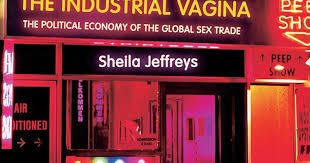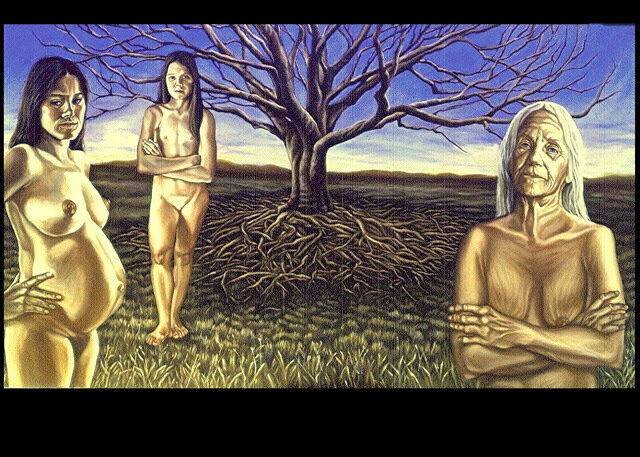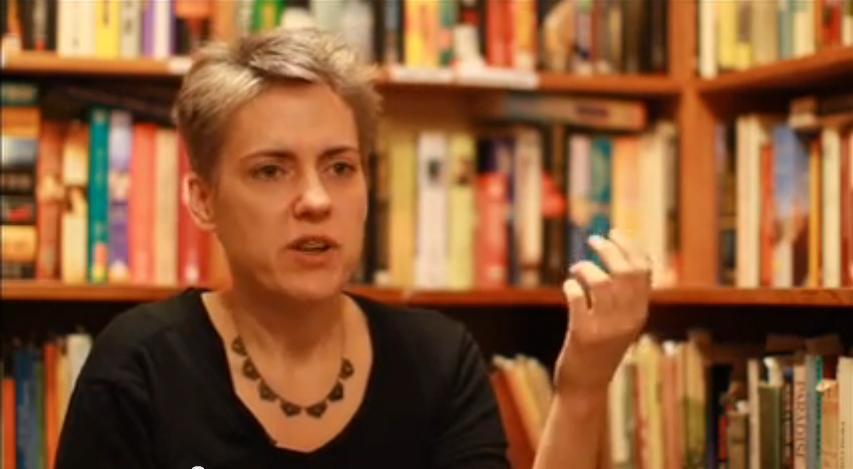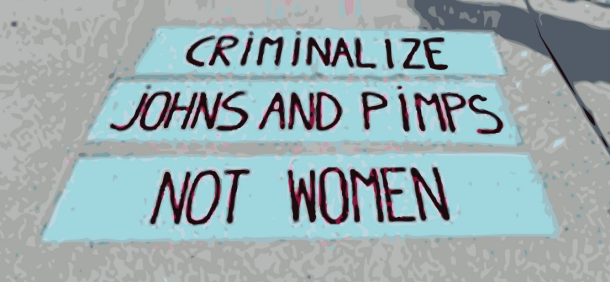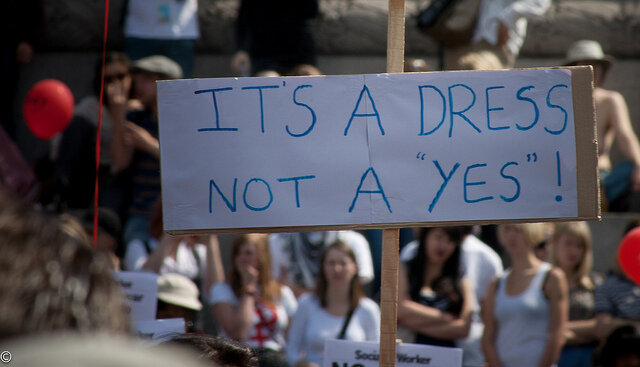by Karen Ingala Smith In 2016, at least 117 UK women killed by men, or where a man is the principal suspect. 117 women in 365 days is one woman dead every 3.1 days. 7 January 2016: Katrina O’Hara, 44, was stabbed to death by her ex-partner, Stuart Thomas, 49. 13 January 2016: Georgina Symonds, 25, was strangled with a rope/ligature by Peter Morgan, 53. 23 January 2016: Lisa Lyttle, 49, was strangled to death with a mobile phone charger. Her husband, Warren Lyttle, 50, has been charged with her murder. 29 January 2016: Andrea Lewis, 51, died suffering a fractured skull, broken ribs and 41 separate areas of bruising, inflicted by Rhys Hobbs 43. 30 January 2016: India Chipchase, 20, was found dead after having been declared missing. Edward Tenniswood, 51, has been convicted of her murder and rape. She died as a result of ‘blunt force trauma’ and ‘pressure on the neck’, 33 separate injuries were found on her body including haemorrhaging across her face, consistent with having been strangled. 31 January 2016: Guida Rufino, 38, was found dead with neck injuries. Her partner Anthony Roberts, is suspected of killing her before killing himself. 31 January 2016: Elidona Demiraj, 25, was stabbed/slashed in the throat. Arben Rexha, 31, has been charged with her murder. 2 February 2016: Geraldine Newman, 51, was killed by head injuries, her two children, Shannon, 12, and Shane, 6, were also stabbed to death. Her husband, and the father of the two children Paul Newman, 42, killed himself after killing his family. 3 February 2016: Bethany Hill, 20, was killed by a blade wound to the neck. Jack Williams, 21, and Kayleigh Woods, 23, are on trial for her murder. 4 February 2016: Caroline Andrews, 52, was strangled to death by her husband, Stuart Andrews, 54. 6 February 2016: Sheila Jefferson, 73, and her husband Dennis, Jefferson, were killed due to head and neck injuries before their home was set on fire. Norman Williams, 70, who was Sheila Jefferson’s brother-in-law, was suspected of killing them and died of injuries sustained in the fire. 7 February 2016: Maylyn Couperthwaite, 52, was stabbed to death by her neighbour Oliver Faughey, 62. Her mother, Audrey Couperthwaite, who was also hurt in the attack said her had subjected them to a campaign of harassment for 6-years 8 February 2016: Kerry Gascoigne, 43, died of “pressure to the neck”. Her partner, Stephen Fretwell, 44, has been charged with her murder. 12 February 2016: Leanne Wall, 36, was head-butted them strangled. Her (ex) partner, William Mack, 39, has been charged with her murder. 12 February 2016: Jessica McGraa, 37, was found dead. Bala Chinda, 25, was charged with her murder. 13 February 2016: Maria Byrne, 35, was found dead. Her husband, Darren Byrne, has been charged with her murder. 21 February 2016: Lisa Reynolds, 31, was killed by multiple stab wounds. Her partner, Barry Knapper, 31, has been charged with her murder. 22 February 2016: Natasha Bradbury, 28, was found dead. Luke Jones, 33, has been charged with her murder. 26 February 2016: Julie Hill, 51, was found dead alongside her mother, Rose Hill, 75. Christopher Whelan, 20, has been charged with their murders. 26 February 2016: Rose Hill, 75, was found dead alongside her daughter, Julie Hill, 51. Christopher Whelan, 20, has been charged with their murders. 26 February 2016: Christine James, 65, was murdered by Kris Wade, 36, who slit her throat in a sexually motivated attack. He had been sacked from previous jobs due to reports of him carrying out sexual assaults but police action had not been taken. 29 February 2016: Julie Archer, 49, died a number of days after being doused with petrol and set alight. Her brother, Stephen Archer, 50, has been charged with her murder. 2 March 2016: Dawn Green, 69, was found dead along with her husband Malcolm Green, 70. Police said they were treating her death as suspicious but were not looking for anyone else in relation to the deaths. 3 March 2016: Gemma Stevens, 32, was found dead in a house fire in the early hours of the morning. Gary Tyson, 35, has been charged with her murder, arson and attempted wounding. He had also been accused of attempting to cause grievous bodily harm to her on February 26. 11 March 2016: Lyndsay Smith, 42, was stabbed to death. Gavin Wilson, 41, of the same address, was charged with her murder. 14 March 2016: Robyn Mercer, 50, was found dead outside her home. Her head had been beaten so severely the police who found her ‘thought she had been shot’. 19 March 2016: Paige Doherty, 15, was killed through stab wounds to her neck. John Leathem, 31, has been charged with her murder. 21 March 2015: Carrie Ann Izzard, 47, was stabbed to death. She had split up with her boyfriend, Gerry Palmer, 50, only days before. He has been charged with her murder. 23 March 2016: Lynne Freeman, 46, was stabbed to death by her partner Alan Bennett, 34, he also murdered his ex-partner Jodie Betteridge, 30. 23 March 2016: Jodie Betteridge, 30, was stabbed to death by her ex-partner Alan Bennett, 34, who also murdered his partner, Lynne Freeman, 46. 23 March 2016: Joanna Trojniak, 29, was stabbed in the chest. Her partner, Pawel Sroka, 33, has been charged with her murder. 24 March 2016: Amina Begum, 47, was found outside her home with multiple stab wounds. Her son, Javid Ahmed, has been charged with her murder. 29 March 2016: Natasha Sadler, 40, was stabbed. Foster Christian, 53, has been charged with her murder and that of Simon Gorecki, 47, as well as two counts of GBH. 30 March – 3 April 2016: Laura Marshall, 31, was found dead on 4th Her partner, Gary O’Dowd had a long history of subjecting her to abuse and had threatened to kill her. He is currently on bail. 31 March 2016: Elizabeth MacKay, 60, was killed in what has been described by police as a “sustained and brutal assault”. Michael Taylor, 70, has been charged with her murder. 2 April 2016: Marie Johnston, 44, was found dead. Matthew Dean, 34, has been charged with wounding with intent and sexual assault. 2 April 2016: Norma Bell, 79, was found dead after a fire at her home, she had been killed before the fire started. Gareth Dack, 32, has been charged with her murder. 10 April 2016: Tracy Cockrell, 51, who had moved to a new area was found dead alongside Nigel McGrath. Police said that they were treating Tracy’s death as murder and were not looking for anyone else. 11 April 2016: Helen Bailey, 51, was last seen alive. Her body was found three months later in a sceptic tank in the grounds of her home. Her partner Ian Stewart, who had reported her missing, has been charged with her murder and perverting the course of justice. 12 April 2016: Leigh-Ann Mahachi, 22, was killed with multiple stab wounds. Tapiwa Furusa, 37, has been charged with her murder. 13 April 2016: Jean Ryan, 67, was stabbed to death. Her husband, Shaun Ryan, 61, has been charged with her murder. 17 April 2016: Coleen Westlake, 48, died of blunt force trauma and strangulation. Craig Bird, 31, has been charged with her murder. 18 April 2016: Nasreen Khan, 39, was killed with multiple stab wounds inflicted by her husband Imran Khan, 39. 24 April 2016: Laraine Rayner, 53, was killed by a stab wound to the neck. Steven Stocks, 43, has been charged with her murder. 24 April 24: Faye Daniels, 30, was killed by multiple stab wounds. Phillip Barlow, 36, was charged with her murder. 26 April 2016: Xin Xin Liu, 39, was stabbed to death. Her husband Robert Kerr, 38, has been charged with her murder. 28 April 2016: Louise O’Brien, 36, was found dead and wrapped up in a carpet after having been strangled between 24 and 28 April. Her partner, David Anderson, 41, has been charged with her murder. 1 May 2016: Natalie Hemming, 31, was last seen. Her family reported her missing on 3 May. Her husband Paul Hemming, 42, was arrested on 4 May and later charged with her murder. Her body was found on 22 May. 1 May 2016: Becky Morgan, 17, was pulled dead from the sea. Michael Bowditch, 21, was found guilty of manslaughter for not helping her or summoning help as she drowned. 3 May 2016: Iris Owens, 75, was found dead. Her son, Robert Owens, 47, has been charged with her murder. 4 May 2016: Julie Cook, 44, died in hospital a day after sustaining a head injury. Daniel Bragg, 36, has been charged with manslaughter. 7 May 2016: Khabi Abrey, 30, was killed as a result of a fire in the flats where she liked. Lillo Toisi, 47, has been charged with her murder, plus arson with intent to endanger life, and arson being reckless as to whether life was endangered. 8 May 2016: Anne-Marie Nield, 44, was found dead with multiple injuries. Richard Howarth, 41, has been charged with her murder. 19 May 2016: Maria Mbombo, 46, was stabbed to death. Her husband Jose Leonardo, also known as Jeff Mbombo, has been charged with her murder. 20 May2016: Marina Erte, 33, was found dead. Her ex-husband, Gytis Griskevicius, 32, has been charged with murder. 21 May 2016: Sonita Nijhawan, 38 was stabbed 124 times with an axe and a knife by her husband Sanjay Nijhawan, 38. He was found guilty of manslaughter. 2 June 2016: Dawn Rhodes, 38, was found dead. Her husband, Robert Rhodes, 42, has been charged with her murder. 3 June 2016: Sylvia Stewart, 69, and her husband Peter Stewart,73 were reported missing. Peter Stewart was later found stabbed to death. Ali Qazimaj, 42, fled the country and was arrested in Luxemburg in relation to the Stuarts’ death. Police have indicated that they have no expectation of finding Sylvia Stewart alive. 9 June 2016: Andrena Douglas, 53, was found dead when police went to her home to inform her that her partner, Henry Galbraith, 50, had been found badly injured in a caravan fire. Her death is being treated as murder. Police are said to be ‘not looking for anyone else’. 13 June 2016: Karen Hales, 53, and her daughter Jade Hales, 28, were killed by blunt force trauma injuries to the head. Anthony Showers, 42, has been charged with their murders. 13 June 2016: Jade Hales, 28, and her mother Karen Hales, 53, were killed by blunt force trauma injuries to the head. Anthony Showers, 42, has been charged with their murders. 16 June 2016: Jo Cox, 38, Labour MP, was shot and stabbed multiple times following a constituency meeting. Thomas Mair, 52, has been charged in relation to her death. 20 June 2016: Helen Fraser, 50, was stabbed to death. Her partner Stephen Bernard, 50, was also found dead with a self-inflicted stab wound. Police are not looking for anyone else. 20th June 2016: Jean Irwin, 83, was strangled to death. Her husband John Irwin, 77, was found hanged. Police are treating Jean’s death as murder and are not looking for anyone else in relations to the crime. 21 June 2016: A 61-year-old woman who has not yet been named was stabbed to death. Vaclovas Liubavicius, 61, who is believed to have been her partner, has been charged with her murder. 23 June 2016: Agnieszka Szmura, 30, was stabbed to death. Toryino Williams, 22, has been charged with her murder. 23 June 2016: Sarah Nash, 37, was strangled and beaten by her partner Lee Guntrip, 25. He had attended a Building Better Relations Programme and a Domestic Abuse Programme after pleading guilty to charges of actual bodily harm and assault by beating. Guntrip also killed himself. 6 July 2016: Albertina Choules, 81, died of a head injury before her body was set alight. Tautuydas Narbutas, 23, has been charged with her murder. 12 July 2016: Allison Muncaster, 48, was shot dead. Her husband Stephen Muncaster, 47, is believed to have killed her then shot himself dead. 15 July 2016: Fiona Southwell, 60, was found dead. Daniel Edwards, 21, has been charged with her murder. 18 July 2016: Aimee Spencer, 27, died of her injuries after having been reported pushed/thrown to her death. 18 July 2016: Emma Baum, 22, died from severe head injuries after a “sustained attack”. David Davies, 25, has been charged with her murder. 18 July 2016: Claire Hart, 50, was shot dead, alongside her daughter Charlotte Hart, 19, by her husband Lance Hart,57, who then shot himself dead. 18 July 2016: Charlotte Hart, 19, as shot dead, alongside her mother Claire Hart, 50, by her father Lance Hart,57, who then shot himself dead. 19 July 2016: Tracy Gabriel, 40, was stabbed to death. Her ex-partner, Hugh Gallacher, 57, is thought to have killed her and a friend, before jumping to his death. 20 July 2016: Samia Shahid, 28, is believed to have been raped by her ex-husband Choudhry Shakeel and then strangled by Shakeel and her father Mohammed Shahid. 22 July 2016: Nicola Haworth, 33, was strangled to death. Gary Fletcher, 34, has been charged with her murder. 19- 22 July 2016: Lenuta Haidemac, 28, was found dead. Casey Scott, 28, has been charged with her murder. 24 July 2016: Hannah Pearson, 16, was pronounced dead shortly after having been taken to hospital by emergency services. James Morton, 23, has been charged with her murder. 28 July 2016: Margaret Mayer, 85, was found dead after her husband Angus Mayer, had tried to throw himself under a train. He was later arrested and detained in relation to her death. 3 August 2016: Darlene Horton, 64, an American tourist visiting London, was stabbed to death by Zakaria Bulhan, 19. 4 August 2016: Gregana Prodanova, 38, was last seen alive. She was reported missing on 8th August and ‘human remains’ now confirmed to be hers, were found on 16 August. Her ex-partner Kostadin Kostov, 42, has been charged with her murder. 4 August 2016: Lynne Braund, 54, died of critical injuries after being taken to hospital with severe burns. Raymond O’Connell, 63, has been charged with her murder. 12 August 2016: Donna Williamson, 44, was stabbed to death. Her partner, Kevin O’Regan, 37, has been charged with her murder. 19 August 2016: Xixi Bi, 24, was found dead after being reported to police as ‘experiencing breathing difficulties’. Her boyfriend Jordan Matthews, 23, has been charged with her murder. 23 August 2016: Mia Ayliffe-Chung, 21, was stabbed to death whilst backpacking in Australia. Smail Ayad, 29, has been charged with her murder and that of Tom Jackson, 30, who died of injuries sustained when trying to save her. 25 August 2016: Shana Grice, 18, was found dead at home after failing to arrive at work. Michael Lane, 27, has been charged with her murder. 13 September 2016: Alison Farr-Davies, 42, was found dead. Dean Jones, 37, has been charged with her murder. 15 September 2016: Melinda Korosi, 33, died of her injuries shortly after police were called to her home. Miklos Verebes, 29, has been charged with her murder in what was described by police as a ‘domestic related’ incident. 16 September 2016: Hayley Dean, 38, was killed through blunt force trauma injury to her head. James D’Arcy, 50, has been charged with her murder. 17 September 2016: Annie Besala Ekofo, 53, and her nephew Bervil Ekofo, 21, were shot dead. Obina Ezeoke, 24, has been charged with their murders. 19 September 2016: Zofia Sadowska, 20, was found dead. Ashan Hassan, 28, has been charged with her murder. 24 September 2016L Nasreem Buksh, 43, is believed to have been killed through a head injury. A 54-year-old man, believed to be her husband Asghar Buksh, is being held in custody in relation to her death. 28 September 2016: Zoe Morgan, 21, and Lee Simmons, 33, were stabbed to death. Andrew Saunders, 20, has been charged with their murders. 2 October 2016: Jackie Pattenden, 53, was stabbed in the chest. Her partner Michael Rough, 55, has been charged with her murder. 2 October 2016: Natasha Wake, 26, was stabbed to death. Jay Nava, 26, with who she had recently ended a relationship, has been charged with her murder. 6 October 2016: Mandy Gallear, 42, was stabbed to death. Her husband Stuart Gallear, 41, has been charged with her murder. 8 October 2016: Lucy Jones, 35, suffered multiple injuries in a prolonged attack. Liam Fletcher, 29, has been charged with her murder. 9 October 2016: Vicky Bance, 37, died in hospital after being stabbed multiple times. Robert Bamce, 53, has been charged with her murder. 12 October 2016: Alice Ruggles, 24, was found at home with serious injuries and declared dead on the scene. Trimaan Dhillon,27, has been charged with her murder. 14 October 2016: Sophie Smith, 17, was subjected to a sustained attack and died of her injuries. Her partner Morgan Banks, 18, has been charged with her murder. 17 October 2016: Jodie Wilkinson, 27, was stabbed to death. David Waterston has been charged with her murder. 17 October 2016: Pardeep Kaur, 30, was reported missing. Her body was found 5 days later. It is believed that she was attacked as she walked home from work. Vadims Ruskuls, 24, has been charged with her murder. 29 October 2016: Ellia Arathoun, 29, was last seen alive. Her remains were found on 3 October. Andrew Proctor, 39, has been charged with her murder. 15 November 2016: Belen Tripp, 52, was stabbed to death. Her husband Peter Tripp, 70, has been charged with her murder. 20 November 2016: Natasha Wild, 23, was stabbed to death. A 31-year-old man was being held in police custody. 22 November 2016: Deeqa Ibrahim, 41, was stabbed to death. Bashir Ali, 41, said to be known to her, has been charged with her murder. 23 November 2016: Lisa Skidmore, 37, was found dead after a fire in her home. Her post-mortem found she had been strangled before the fire started. Her 80-year-old mother told police she had disturbed an intruder who had then assaulted her. Police are looking for a man in his 20s. 3 December 2016: Rebecca Johnson, 26, was stabbed to death. Her boyfriend Radec Kovac, 36, has been charged with her murder. 8 December 2016: Linda Ordinans, 61, was found dead at home after being alerted by her husband Nigel Ordinans, 63, who told them that he had killed her. He killed himself shortly afterwards. 8 December 2016: Holly Alexander, 37, was stabbed to death along with Ronnie Kidd, 40. Krzysztof Gadecki, 37, has been charged with their murders. 10 December 2016: Andraya Webb, 39, was killed in a house fire that had been deliberately started. Anthony Porter, 32, has been charged with her murder. 12 December 2016: Umida Eshboboeva, 29, died after a suspected assault in her home. Adkhamjon Tovasharov, 34, has been charged with her murder. 15 December 2016: Angela Best, 51, was found unresponsive after a call to police and medics and was later declared dead. A man who was taken to hospital is being treated as a suspect. 16 December 2016: Clare Paton/Nagle, 38, was killed through ‘pressure on the neck’. Her husband, Vincent Nagle, 44, who died shortly afterwards in a car crash, is suspected to have killed her. 2 2 December 2016: Hayley Wall, 25, died 9 days after being assaulted. Christoper Wall, 58, has been charged with her murder. 26 December 2016: Nicola Woodman, 39, was stabbed to death. James Hutchinson, 42, has been charged with her murder. Awaiting information regarding the deaths of Gurpreet Kaur, Tanussum Winning, and an as-yet-unnamed woman from West Bridgford, Nottingham, Sandra Gill, Michelle Wright, Jean Constant, Debbie Wilkinson, Linda Harding, Kelly Machin, Tracy McPartland and Stacey Tierney. Any updates on these women or others missing from the list gratefully received.
...
